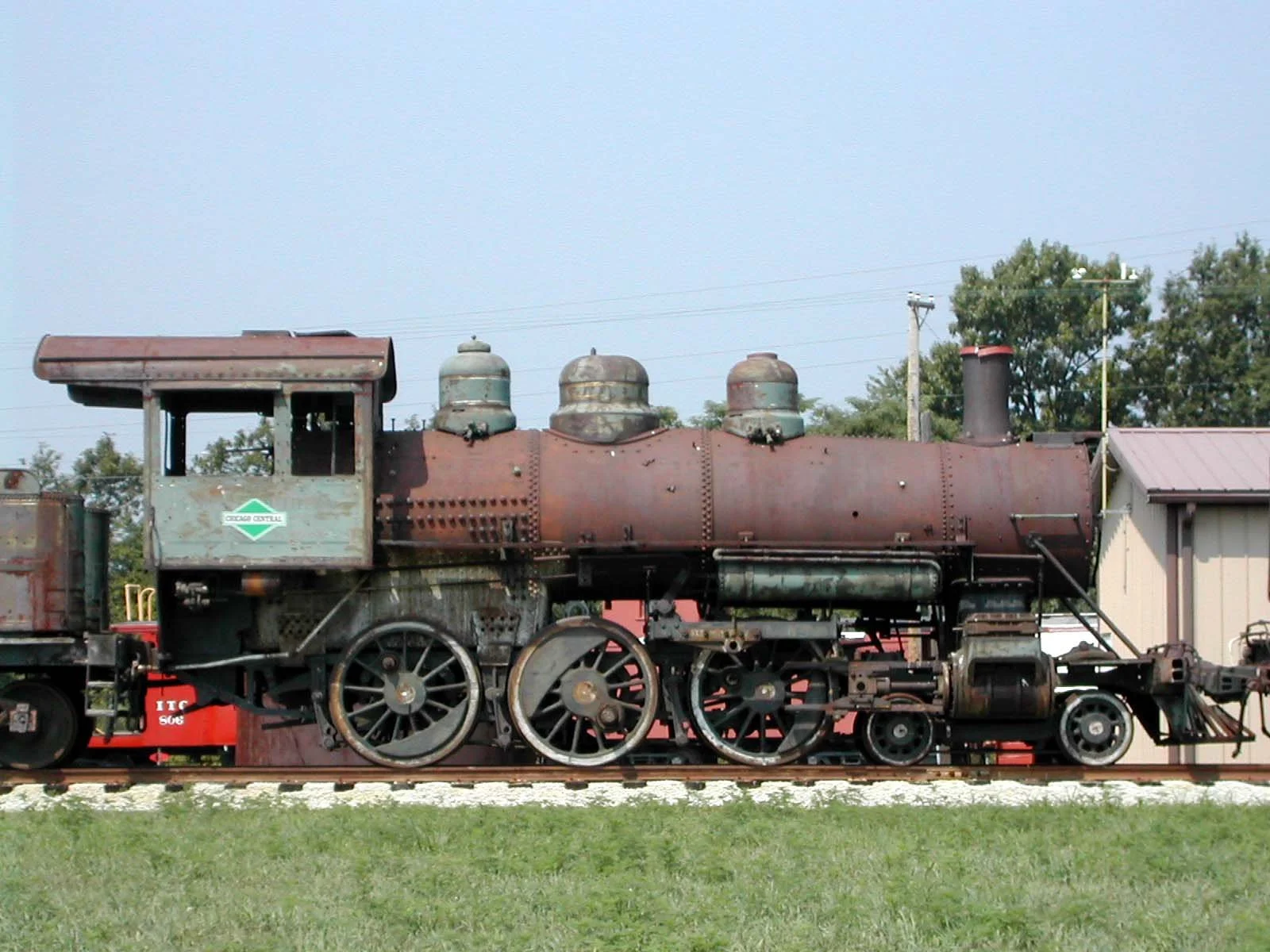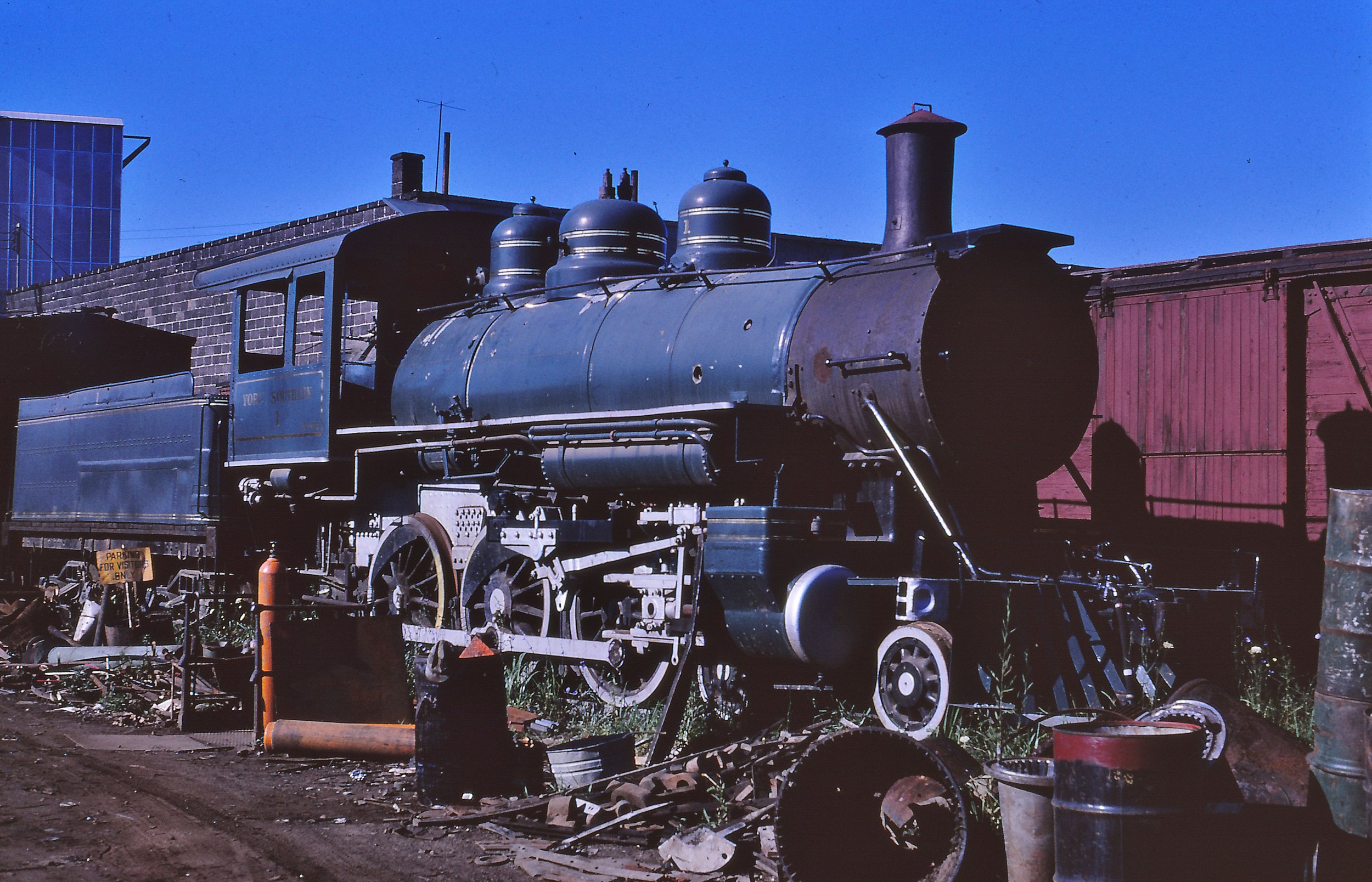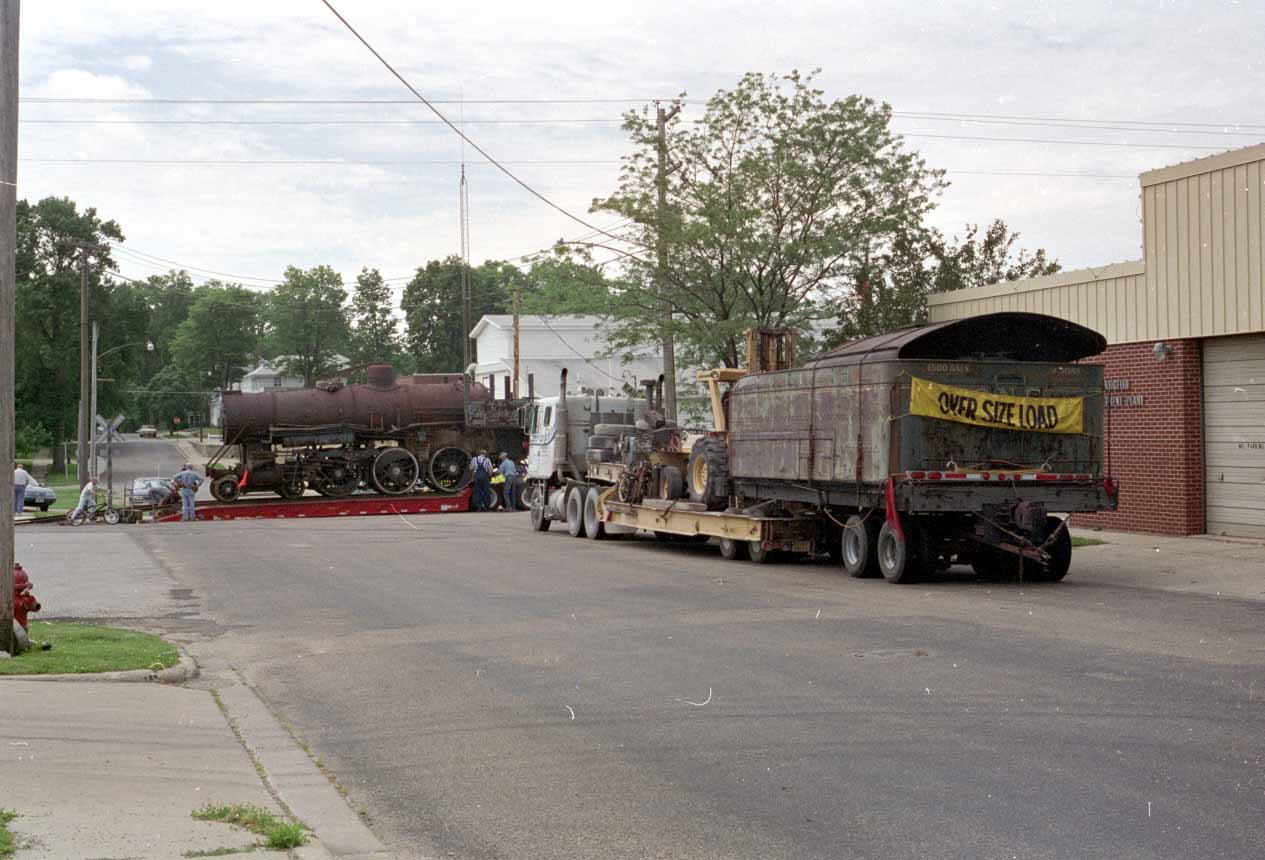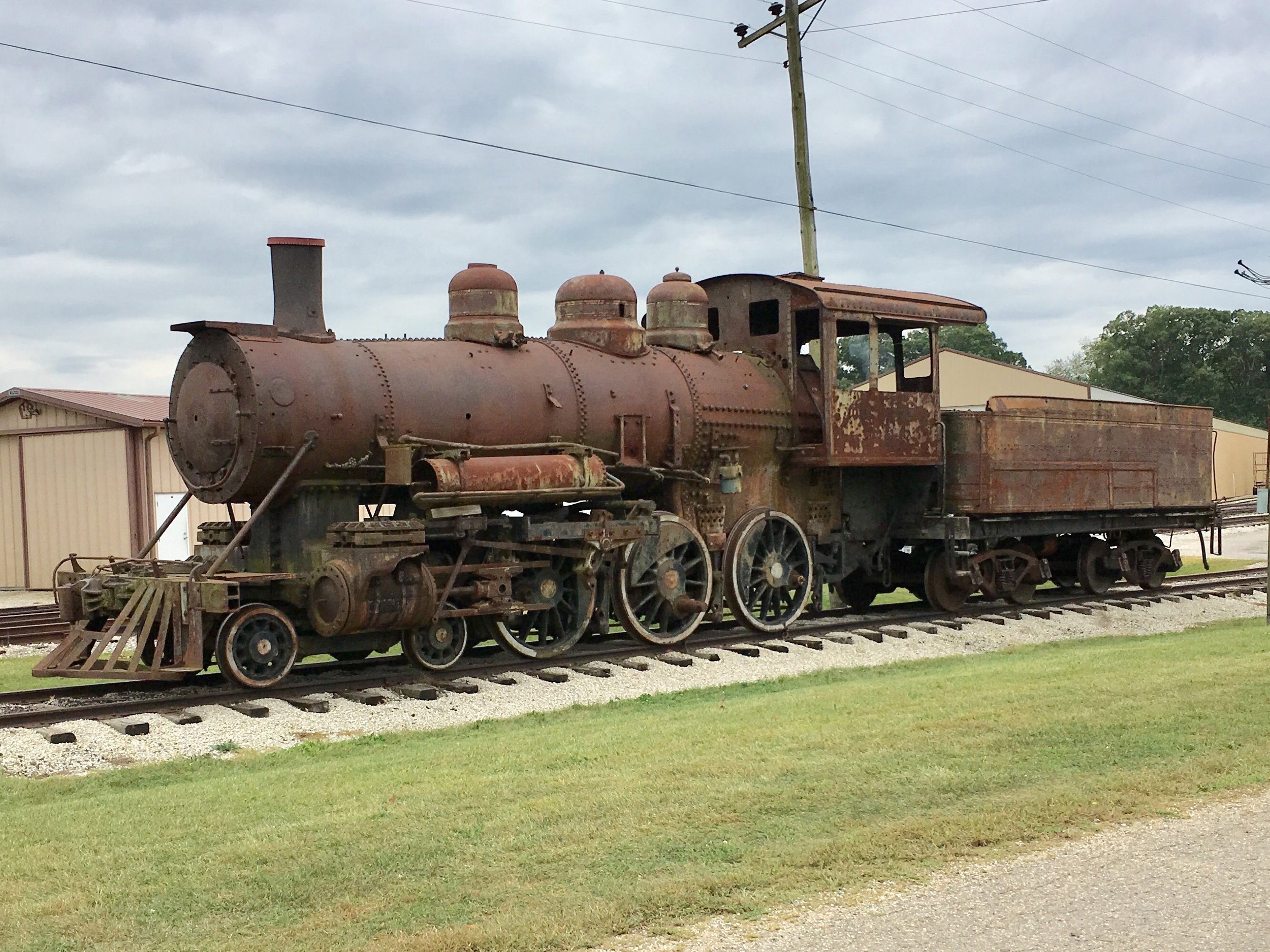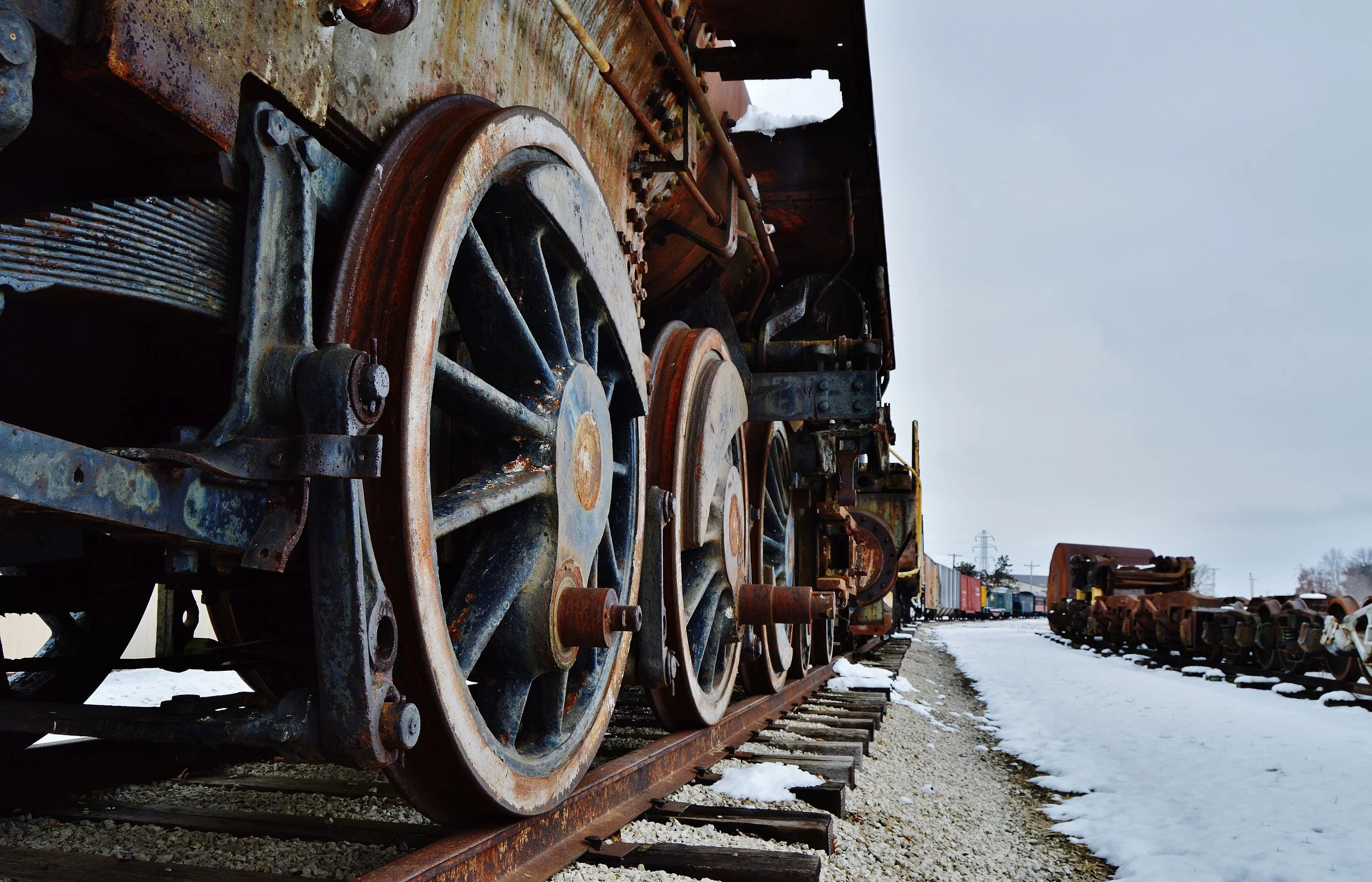
MISSISSIPPI EASTERN #303
Builder: BLW
Build Date: May 1916
Type: 4-6-0 Ten Wheeler
Status: In storage; awaiting cosmetic restoration
Mississippi Eastern (MERY) No. 303 was built in May 1916 by the Baldwin
Locomotive Works.
The MERY is one of America’s forgotten railroads. Founded on July 6, 1903,
the MERY connected the villages of Quitman and Theadville, Mississippi,
with a total distance of just 16 miles. An extension to Pine Ridge, Mississippi
was operated briefly, though as business began to decline it was abandoned.
The MERY carried lumber from the area’s forests to a mill in Quitman, where
it was turned into lumber and handed over to the much larger Mobile & Ohio
Railroad for shipment around the country.
In the early 1930s, most of the forests in the area had been cleared, and the MERY was out of business. Operations ceased in 1933, and in 1934, the 303 was sold to the Birmingham Rail & Equipment Company, a locomotive dealer in Birmingham, Alabama. A couple years later, it was sold again to the Lancaster & Chester (L&C) Railroad of Lancaster, South Carolina, where it operated pulling freight and passenger trains for the next decade. The L&C renumbered the locomotive to No. 32.
In 1946, the L&C became one of the first railroads in the country to “dieselize,” meaning it replaced all of its steam locomotives with diesels. Diesel locomotives are easier and cheaper to operate than steam, and the L&C’s management recognized this very early on when diesel technology was still new to railroads. No. 32 was retired and sold to the nearby Hampton & Branchville (H&B) Railroad, another logging operation, in late 1946.
Much like it had done on the Mississippi Eastern, No. 32 was used to pull log trains between the communities of Hampton and Branchville, South Carolina. However, the H&B also recognized the success of diesel locomotives in the late 1950s. The 32’s third life came to an abrupt end in 1958 when the H&B dieselized. Placed into storage on the H&B to serve as a backup locomotive in case one of the diesels broke down, the 32’s future seemed uncertain. It last ran under its own power in late 1958, and has not been under steam since. By the early 1960s, the H&B wanted it off the property, and put it up for sale.
In 1963, railfan Byron Andrews of York, Pennsylvania, purchased No. 32 shortly before it was going to be scrapped. Andrews was the proud owner of the York Southern Railway, a tourist operation that ran passenger excursion trains over the Maryland & Pennsylvania Railroad with borrowed diesel locomotives. Andrews intended to restore #32 to operating condition and use it to power the trains instead.
The locomotive’s future looked promising. It was moved on a freight train to Andrews’ property in York and placed into storage until funds could be obtained for the needed work to return it to steam. The 32 was renumbered again to No. 1, and received a beautiful new paint job inspired by the Southern Railway’s streamlined Crescent passenger train. Work soon began to repair the locomotive and get it ready for service.
However, not long after the locomotive had been repainted, ownership of the excursion operation in York changed and Byron Andrews lost his business. Without a source of income to pay for the property on which #1 was stored, Andrews was forced to abandon it, and in 1968, No. 1 was sold at auction to the Leveran & Sons scrap yard in York. It was purchased again by Dick Jensen of Chicago, Illinois in 1970.
Following a severe injury and a complicated legal case with other locomotives he owned in the late 1970s, Dick Jensen fell into financial trouble. No. 1 was seized and sold at a sheriff auction to William Latham of Rockford, Illinois, who had plans to incorporate it into a railroad museum there. However, when that effort failed, it was donated along with Milwaukee Road diesel locomotive No. 1649 to the Monticello Railway Museum in June 2000.
This troubled locomotive has finally found its forever home in Monticello. Currently in storage in the museum’s Camp Creek Yard, it will eventually be cosmetically restored to look as good as new.
Scroll down to see photos of No. 303 taken throughout its long history.

